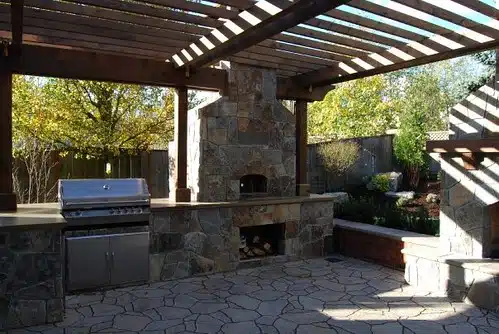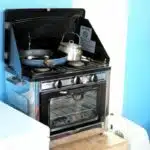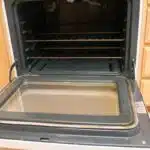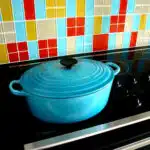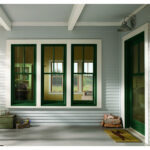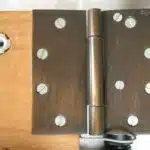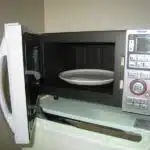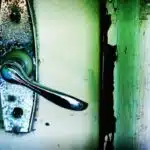Outdoor pizza ovens are becoming increasingly popular among homeowners who enjoy entertaining guests and serving up delicious homemade pizzas. Building an outdoor pizza oven can be a rewarding experience that adds value to your home and provides years of enjoyment.
Before embarking on the construction of an outdoor pizza oven, it is important to understand the basics of oven design, materials, and construction techniques. A well-designed and properly constructed outdoor pizza oven will provide consistent heat for cooking perfect pizzas every time, while also adding aesthetic appeal to your backyard or patio area. In this article, we will guide you through the process of building an outdoor pizza oven from start to finish, providing tips and tricks along the way to ensure that you end up with a high-quality finished product that will impress your friends and family.
Choosing The Right Location For Your Pizza Oven
Choosing the right location for your outdoor pizza oven is crucial in ensuring that you have a pleasant and successful cooking experience. There are two primary considerations when selecting the perfect spot: landscaping and climate.
Landscaping considerations include evaluating the terrain of your property. It is essential to choose a flat surface to build your oven, so it sits levelly. Additionally, it would be best if you thought about access to your oven site. You don’t want to have to transport heavy materials up a steep slope or stairs. Also, consider whether you will need additional space for other outdoor kitchen equipment, such as countertops or grills.
Climate considerations refer to weather patterns in your area. The ideal location for an outdoor pizza oven should be sheltered from strong winds and rain and receive ample sunlight throughout the day. In areas with extreme cold temperatures, insulation may be necessary to keep the heat inside the oven during winter months. Furthermore, if you live in areas with high humidity levels, it may not be feasible to construct an outdoor pizza oven since moisture can cause damage over time.
Now that we’ve covered landscaping and climate considerations let’s move on to deciding on the size and style of your oven based on these factors.
Deciding On The Size And Style Of Your Oven
When constructing an outdoor pizza oven, it is important to choose the right size and style to ensure a successful project. Various types of ovens are available, including wood-fired and gas-fired ovens, both of which have advantages and disadvantages. Additionally, design considerations such as oven ventilation can have a large impact on the oven’s performance. Careful planning and research is essential in order to create an oven that is both efficient and aesthetically pleasing.
Choosing A Size
When it comes to deciding on the size and style of your outdoor pizza oven, choosing the right size is crucial. The size of your oven will determine how many pizzas you can cook at once and how long they will take to cook. Cost considerations are also important when selecting the size of your oven, as larger ovens may be more expensive to build.
Design features play an important role in determining the appropriate size for your outdoor pizza oven. Consider the amount of space you have available in your backyard, as well as any existing landscaping or obstacles that may affect the placement and size of your oven. Additionally, think about how often you plan to use your oven and for what occasions – if you frequently entertain large groups, a bigger oven may be necessary.
Ultimately, choosing the right size for your outdoor pizza oven requires careful consideration of both cost considerations and design features. By taking the time to evaluate these factors and determine your specific needs, you can build an oven that will meet all of your culinary desires for years to come.
Style Of Oven
When deciding on the size and style of your outdoor pizza oven, you must also consider the type of oven that best suits your needs. There are two primary styles to choose from: brick and portable. Brick ovens are permanent fixtures constructed with sturdy materials such as concrete, brick, or stone. These ovens offer a traditional look and feel and are ideal for those who plan to frequently use their oven for large gatherings. On the other hand, portable ovens are versatile options that can be moved around your backyard or taken to different locations. These ovens come in both wood-fired and gas-fired models.
Wood-fired ovens are a popular choice for those seeking an authentic pizza experience. They offer an unbeatable smoky flavor that is impossible to replicate with gas-fired ovens. Additionally, wood-fired ovens can reach higher temperatures than gas-fired ones, allowing pizzas to cook in just a few minutes. However, they require more attention and maintenance than their gas counterparts because you need to consistently add fuel throughout the cooking process.
Gas-fired ovens are an alternative option for those who prioritize convenience over authenticity. They allow for easy temperature control and require less time-consuming preparation than wood-fired ovens. Gas-fueled models also have less impact on the environment since they do not produce smoke like wood-burning units do. Moreover, these types of outdoor pizza ovens come in various sizes ranging from small table-top units to large freestanding ones suitable for commercial purposes.
As you consider which style of outdoor pizza oven is right for you, keep in mind both practical concerns and personal preferences like cost, frequency of use, space availability, and environmental impact. With so many options available on the market today ranging from traditional brick structures to modern portable models powered by gas or wood fuels – there is sure to be one that fits your needs perfectly!
Gathering The Necessary Tools And Materials
Before starting the construction of your outdoor pizza oven, it is important to gather all the necessary tools and materials. Planning ahead will not only save you time but also money in the long run. Finding inspiration online or from other outdoor pizza oven enthusiasts can help you determine what type of oven you want to build and what materials are necessary.
Budgeting tips should also be considered when gathering tools and materials. It is important to determine how much money you are willing to spend on your outdoor pizza oven project. Keep in mind that some materials may be more expensive than others, but they may also have a longer lifespan and require less maintenance in the future.
Now that you have an idea of what type of outdoor pizza oven you want to build and how much money you are willing to spend, it’s time to gather the necessary tools and materials. Basic tools such as a hammer, saw, level, and measuring tape will be needed along with materials such as bricks, cement, sand, and insulation. With these tools and materials on hand, we can move onto constructing the base for your pizza oven.
Constructing The Base For Your Pizza Oven
After gathering the necessary tools and materials, it is time to start building the base for your outdoor pizza oven. One of the first decisions you will need to make is whether to use a brick or concrete base. Brick bases are more traditional and offer a rustic look, but they can be more difficult to build and may require more maintenance over time. Concrete bases are easier to construct and offer a more modern look, but they may not blend in as well with your backyard décor.
Once you have decided on the type of base you want to build, it is important to consider waterproofing techniques. Since your pizza oven will be exposed to the elements, it is crucial that you protect it from water damage. There are a variety of products available that can help protect your base from moisture, including waterproof sealants and coatings. Additionally, you may want to consider adding drainage channels or a slight slope to your base in order to direct water away from your oven.
In summary, choosing between a brick or concrete base for your outdoor pizza oven will depend on personal preference and overall aesthetic goals. Regardless of which option you choose, it is important to take measures to waterproof your base in order to protect against water damage. With these considerations in mind, you can move ahead with confidence as you begin building the firebrick dome for your outdoor pizza oven.
Building The Firebrick Dome
The most crucial part of building an outdoor pizza oven is constructing the firebrick dome. This is where the magic happens, where your delicious pizza gets cooked to perfection. The firebrick dome should be built with precision and care, using high-quality firebricks that can withstand high temperatures.
Firebrick maintenance is essential for the longevity of your outdoor pizza oven. Cracks or missing bricks will affect the performance of your oven and can cause smoke leakage. Therefore, it’s important to inspect and repair any damages as soon as possible. Regular cleaning of the firebricks is also necessary to prevent grease buildup and ensure proper heat distribution.
Dome insulation techniques are vital in maintaining a consistent temperature inside the oven. Insulating materials such as ceramic fiber blanket or perlite concrete can be used to cover the dome and create a barrier between the hot interior and exterior environment. These materials provide excellent insulation properties that keep heat from escaping while preventing cold air from entering the oven, resulting in a perfectly cooked pizza every time.
To create the insulating layer, start by applying a thin layer of mortar on top of the firebrick dome. Then, cover it with ceramic fiber blanket or perlite concrete, making sure to leave enough space for ventilation at the top. Securely attach this layer to prevent air pockets that could cause cracks during heating or cooling cycles. With proper insulation techniques in place, you’ll be well on your way to creating an outdoor pizza oven that will serve up mouth-watering pizzas for years to come!
Creating The Insulating Layer
- Fireclay is a mixture of clay, sand, and gravel that is used for insulation in outdoor pizza ovens.
- The fireclay should be mixed with water until it is the consistency of pancake batter.
- Clay bricks must be laid onto the oven’s base with a layer of fireclay between each brick.
- The fireclay should be laid in a continuous layer with a thickness of 1 to 2 inches.
- Once the fireclay has been laid, it should be left to cure for at least a week before use.
- A curing period of two weeks is recommended for optimal insulation of the oven.
Mixing Fireclay
The key to building a long-lasting outdoor pizza oven is creating the right insulating layer. This is where fireclay comes into play – a versatile material that has been used in construction for centuries. To mix fireclay, you’ll need to follow some basic techniques, including adding water gradually and mixing until you’ve achieved a smooth, workable consistency.
When it comes to using fireclay for other DIY projects, it’s important to remember that this substance is highly resistant to heat and can withstand temperatures of up to 2,700°F. This makes it ideal for use in ovens and other high-heat applications. However, if you’re planning on using fireclay for another type of project, such as sealing chimneys or repairing cracks in masonry walls, be sure to research the proper mixing techniques and application methods beforehand.
By mastering the art of fireclay mixing techniques and understanding its many uses in DIY construction projects, you’ll be well on your way to building an outdoor pizza oven that will impress your family and friends for years to come. So why wait? Start gathering your materials today and get ready to transform your backyard into a culinary oasis!
Laying Clay Bricks
To create a long-lasting outdoor pizza oven, it is crucial to have the right insulating layer. One of the best materials to use for this is fireclay, which can withstand high temperatures and provide excellent insulation. However, it is not enough to just mix fireclay properly – you also need to know how to lay clay bricks effectively.
When laying clay bricks for your pizza oven’s insulating layer, you must pay close attention to brick placement and mortar mixing. The bricks should be placed tightly together in a staggered pattern, leaving no gaps between them. The mortar should also be mixed carefully, with just the right amount of water added for a workable consistency.
As an outdoor pizza oven construction expert, I recommend using a refractory mortar mix that contains both fireclay and sand for the best results. This will ensure that your insulating layer is strong and durable enough to last for years to come. By following these tips and techniques for brick placement and mortar mixing, you can create an effective insulating layer that will keep your pizza oven hot and ready for cooking whenever you need it.
Curing The Layer
After applying insulation and creating the insulating layer, it is essential to cure the layer properly. This step is crucial because it ensures that the insulating layer dries completely before proceeding with further construction. Incomplete drying can cause structural damage and instability, which can compromise the longevity of your outdoor pizza oven.
As an outdoor pizza oven construction expert, I recommend allowing at least two weeks for the insulating layer to dry completely. During this time, it is important to keep the area well-ventilated and dry. Avoid exposing the area to rain, snow or any other moisture that may slow down or hinder the drying process.
Once you have allowed enough time for curing, you can proceed with adding additional layers to your outdoor pizza oven. By following these steps, you can create a durable and long-lasting outdoor pizza oven that will provide many delicious meals for years to come.
Installing The Chimney
When installing the chimney, there are two main factors that need to be considered: the chimney height and the materials used. The height of the chimney will determine how well smoke is drawn from the oven, while the materials used will affect its durability and resistance to heat.
In terms of chimney height, a good rule of thumb is to make it at least 10% higher than any nearby structures or trees. This will ensure that smoke is drawn away from your living spaces and won’t cause any nuisance to your neighbors. Additionally, a taller chimney can create better draft and flow for proper combustion.
As for materials, it’s important to use high-quality materials that can withstand high temperatures and resist damage from weathering. Commonly used materials include stainless steel, galvanized steel, and clay flue tiles. Each material has its own advantages and disadvantages, so it’s important to consult with an expert on which one would be best suited for your specific situation.
Advantages of stainless steel:
Durable and long-lasting
Resistant to corrosion
Disadvantages of stainless steel:
Expensive compared to other options
Can discolor over time
Advantages of galvanized steel:
Affordable option
Resistant to rust
Disadvantages of galvanized steel:
Not as durable as stainless steel
Can corrode over time if not properly maintained
In summary, when installing the chimney for your outdoor pizza oven, consider both the height and materials used carefully. A taller chimney can improve smoke flow while using durable materials such as stainless or galvanized steel can ensure longevity. In the next section, we will discuss designing a door and flue for optimal functionality in your outdoor pizza oven.
Designing The Door And Flue
When designing the door and flue of an outdoor pizza oven, the size of the door should be carefully considered to ensure optimal heat retention. The diameter of the flue is also an important factor when constructing an outdoor pizza oven, as it impacts the rate of air flow and the oven’s ability to reach and maintain the desired temperature. The size of the door should be adjusted to meet the needs of the user, and the ideal flue diameter will depend on the size and shape of the oven. It is important to research the available options and consult an expert to ensure the design of the door and flue is optimized for the specific needs of the oven.
Door Size
As outdoor pizza ovens have become increasingly popular, the demand for customizing materials and alternative designs has risen. However, one aspect that can often be overlooked is the door size. The size of the door is crucial as it affects how easily you can insert and remove pizzas from the oven.
When designing your outdoor pizza oven, it’s important to consider the standard sizes of pizza as well as any larger or oddly shaped pizzas that you may want to cook. A door that is too small will make it difficult to maneuver pizzas in and out of the oven, while a door that is too large may let out too much heat resulting in uneven cooking.
Alternative designs such as a split-door or sliding-door can also be considered when customizing your outdoor pizza oven. These types of doors offer greater flexibility for different sized pizzas and can also help to retain heat more effectively than a traditional hinged door. When choosing your design, always consider functionality over aesthetics for a truly satisfying cooking experience.
Flue Diameter
When designing an outdoor pizza oven, there are several factors to consider, including the size and design of the door. Another important aspect that is often overlooked is the flue diameter. The flue design plays a critical role in maintaining proper ventilation and heat distribution within the oven. It’s crucial to choose the right size for your specific oven to ensure optimal performance.
The flue diameter should be determined based on the size of your oven and its intended use. A smaller diameter flue may be suitable for smaller ovens, while larger ovens may require a wider diameter to ensure proper ventilation. Additionally, ventilation options such as chimney height and draft control can also impact the overall performance of your outdoor pizza oven.
Choosing the right flue diameter and ventilation options will not only improve heat distribution but also help prevent smoke buildup within the oven. This can greatly enhance your cooking experience by allowing you to achieve that perfect crispy crust on your pizzas every time. By considering all these factors during the design process, you can create an outdoor pizza oven that not only looks great but also performs exceptionally well.
Adding The Cooking Surface
With the door and flue designed, the next step in building an outdoor pizza oven is to add the cooking surface. This can be done using a variety of materials such as fire bricks, clay, concrete or stone. When choosing these materials, it is important to consider their durability and heat retention properties. Fire bricks are a popular option due to their ability to withstand high temperatures without cracking.
One thing to keep in mind when selecting brick options is that they should be able to withstand high temperatures for long periods of time. This is especially important if you plan on making multiple pizzas in one session. The brick selection will also depend on your budget and personal preferences. Concrete may be more affordable but may not retain heat as well as other options.
Heating elements are another crucial aspect of designing the cooking surface for your pizza oven. These can include gas burners, wood-fired grills or electric heating coils depending on your preference and resources available. It is important to ensure that these heating elements are installed properly and safely as they will be responsible for generating the heat needed for cooking delicious pizzas.
Building an outdoor pizza oven requires careful planning and consideration of various factors such as design, materials, heating elements and safety precautions. While it may seem daunting at first, with a little patience and attention to detail anyone can create a beautiful and functional pizza oven for their backyard. The next step in this process involves building a pizza peel which will help you slide your delicious creations into the oven with ease!
Building A Pizza Peel
To fully enjoy your homemade pizza, you need a pizza peel. This is the tool used to transfer the pizza into and out of the oven. Making one yourself can be a fun and rewarding experience. The first step in building a pizza peel is to select the right wood.
When selecting wood for your pizza peel, you want to choose a hardwood that is strong enough to support the weight of your pizza without bending or breaking. Good examples include cherry, maple, or oak. You also want to ensure that there are no knots or imperfections in the wood that could cause the peel to break during use.
Once you have selected your wood, it is important to season it properly. This involves applying a food-grade oil, such as mineral oil or beeswax, to protect against moisture and bacteria. It also helps prevent sticking when transferring the pizza onto the peel. Proper seasoning techniques will ensure that your pizza peel lasts for years and provides delicious homemade pizzas every time.
Nested Bullet Point List:
- To evoke excitement:
- Nothing beats homemade pizza straight from your own outdoor oven
- A well-crafted and seasoned wooden pizza peel adds authenticity and enjoyment to the experience.
- To evoke satisfaction:
- Building a pizza peel yourself can be easy and rewarding
- Knowing that you made something practical with your own hands is an accomplishment worth savoring.
As you prepare for using your new outdoor oven and related tools like your newly created wooden pizza peel, it’s important to take care in ensuring everything is ready for optimal performance. In addition to proper seasoning techniques for your wood selection, preparing your oven for use requires cleaning out any debris or ashes left over from previous uses. With all parts of your outdoor cooking setup properly maintained, you’ll be able to focus on creating delicious meals enjoyed by family and friends alike.
Preparing Your Oven For Use
When choosing a location for an outdoor pizza oven, it is important to consider the size, shape, and layout of the oven that best fits the available space. The materials needed for building an outdoor pizza oven include firebrick, mortar, and insulation, along with metal components to create the dome-shaped structure. The base of an outdoor pizza oven should be constructed on a flat, level surface and should be made of unglazed firebrick, with a layer of mortar used to ensure a strong, secure foundation. Additionally, the base should be wide enough to accommodate the larger firebrick pieces used for the dome-shaped structure.
Choosing A Location
Choosing the perfect location for your outdoor pizza oven is a crucial step in preparing it for use. As an outdoor pizza oven construction expert, I have seen many common mistakes made by homeowners when choosing a location. It is important to consider factors such as accessibility, safety, and proximity to other outdoor living spaces.
One mistake to avoid is placing your oven too close to your home or other structures. This can create a fire hazard and also cause smoke and heat damage to your property. Another mistake is placing the oven in an area that is difficult to access, which can make it challenging to transport materials and food to and from the oven.
When selecting a location, consider its proximity to other outdoor living spaces. You want your pizza oven to be easily accessible for entertaining guests while still allowing enough space for seating areas and other activities. By avoiding these common mistakes and carefully choosing the perfect location for your outdoor pizza oven, you can enjoy delicious homemade pizzas with family and friends in a safe and convenient setting.
Gathering Materials
Now that you have chosen the perfect location for your outdoor pizza oven, it is time to gather the necessary materials to prepare it for use. Sourcing materials can be a daunting task, especially if you are not familiar with outdoor oven construction. As an outdoor pizza oven construction expert, I recommend determining your budget before beginning to source materials. This will help you avoid overspending and ensure that you have enough funds to purchase all necessary items.
When gathering materials, it is essential to consider both the aesthetic appeal and functionality of each item. For example, choosing high-quality insulation material can improve the efficiency of your oven and reduce heat loss. Similarly, selecting firebricks that fit well together will provide a sturdy base for your oven while also giving it an attractive appearance.
Another important consideration when sourcing materials is durability. Outdoor pizza ovens are exposed to harsh weather conditions, which can cause wear and tear over time. Choosing durable materials such as stainless steel or cast iron can help prolong the life of your oven and minimize repair costs in the long run. By carefully sourcing materials with these factors in mind, you can ensure that your outdoor pizza oven is both functional and visually appealing for years to come.
Constructing Base
Now that you have gathered all the necessary materials to prepare your outdoor pizza oven, it is time to construct its base. Building a sturdy base for your oven is crucial as it will ensure its stability and prevent any accidents from occurring during use. To start, you need to choose the type of base that best suits your needs. Some common options are concrete slabs, brick pavers, or wooden platforms.
Once you have decided on the type of base to use, it is important to level the surface where you plan to build your base. This can be achieved by using leveling techniques such as adding or removing soil, compacting it with a tamper or roller, and checking for levelness using a spirit level. A level surface will ensure that your base is stable and secure.
Decorative options can also be added when constructing your base to enhance its aesthetic appeal. For instance, you can add mosaic tiles, pebbles or stones between bricks or pavers, or paint the wooden platform in a color that complements the surrounding area. By considering these factors when constructing your oven’s base, you can ensure that it looks good while still serving its primary purpose of providing a stable foundation for your outdoor pizza oven.
Best Practices For Cooking With Your Pizza Oven
The art of pizza-making is incomplete without the right cooking techniques. When it comes to using your outdoor pizza oven, you need to consider a few things. Firstly, preheat the oven for at least 45 minutes before cooking. This will help to create an ideal temperature for cooking your pizzas. A good temperature range is between 500 and 600°F. Secondly, avoid opening the oven too frequently as this can let out heat and disrupt the cooking process.
Now that you have mastered the art of temperature control, it’s time to get creative with your recipes! You can experiment with different types of doughs and toppings. A popular option is the classic Margherita pizza with tomato sauce, mozzarella cheese, and fresh basil leaves. Alternatively, you could try adding some roasted vegetables or cured meats like pepperoni or prosciutto.
Cooking with your pizza oven can be an enjoyable experience for all involved. By incorporating these techniques and recipe ideas into your culinary repertoire, you’ll be sure to impress your guests with delicious homemade pizzas every time! In the next section, we will discuss how to clean and maintain your pizza oven to ensure its longevity and continued success in creating delicious meals for years to come.
Cleaning And Maintaining Your Pizza Oven
Cleaning the pizza oven is an essential part of its maintenance, and should be done regularly to ensure the oven is well kept. Maintaining the pizza oven will require regular inspections to check for any damage and to ensure the oven is in good condition. To clean the oven, the oven should be cooled down and all food residue should be removed. To maintain the oven, it is important to keep the oven clean, check for any cracks or damage, and to make sure the oven is well insulated to preserve heat.
Cleaning The Oven
Cleaning the Oven Keeping your outdoor pizza oven clean is essential to ensure that it functions efficiently and produces delicious pizzas. Many people assume that cleaning an outdoor pizza oven is a daunting task, but with the right cleaning techniques and maintenance schedule, it can be effortless. Regular cleaning of your oven will help prevent the accumulation of soot, ash, and grease that can cause fires or affect the quality of your pizzas.
The first step towards cleaning your pizza oven is to remove any remaining ashes or debris from previous use. You can use a scoop or brush to do this effectively. Once you have removed all the loose debris, you can then begin scrubbing the interior walls and floor with a stiff-bristled brush. Be sure to use a cleaning solution made specifically for ovens and avoid using abrasive materials that may scratch or damage the surface.
After scrubbing, rinse off the interior surfaces thoroughly using water. It’s important to ensure that no residue from the cleaning solution remains inside the oven as it could affect its performance when cooking pizzas. Finally, let your outdoor pizza oven dry completely before using it again. By following these simple steps, you can keep your pizza oven clean and functioning at peak efficiency for years to come!
Maintaining The Pizza Oven
Maintaining an outdoor pizza oven is just as important as cleaning it. Properly maintaining your oven will help extend its lifespan, prevent unnecessary repairs, and ensure that it functions optimally. One essential maintenance tip is to inspect the oven every so often for any damage or wear and tear. Check the exterior for any cracks or holes that may compromise the insulation and cause heat loss.
Additionally, be sure to cover your outdoor pizza oven during the winter months to protect it from harsh weather conditions such as snow, sleet, and freezing temperatures. Before storing your pizza oven for the winter season, ensure that it’s completely clean and dry. This step prevents mold growth or rusting of metal parts while in storage.
Another critical aspect of maintaining your outdoor pizza oven is by using high-quality fuel sources. Avoid using wet wood or low-quality charcoal as they produce more smoke than heat, which can lead to a buildup of soot and ash in your oven. Instead, opt for seasoned hardwoods such as oak or maple as they burn hot and evenly without producing too much smoke.
By following these simple cleaning tips and maintenance practices, you can keep your outdoor pizza oven functioning efficiently for years to come. Regular inspection, proper winter storage, and using high-quality fuel are all crucial steps towards keeping your pizza oven in top condition. With a little bit of care and attention to detail, you can enjoy delicious homemade pizzas without worrying about equipment failures or malfunctions!
Troubleshooting Common Issues
After cleaning and maintaining your outdoor pizza oven, you may encounter some common issues that need to be addressed. One of the most common problems is cracks in the oven floor or dome. Over time, exposure to heat and weather can cause these cracks to form, which can lead to uneven cooking and heat loss. To repair cracks, you will need to remove any loose material and then fill the crack with a high-temperature mortar. This will ensure that your oven remains in good condition for years to come.
Another issue that can affect the performance of your outdoor pizza oven is poor heat distribution. This can occur if there are gaps or holes in the insulation or if the oven door does not fit properly. To improve heat distribution, you should first check that all gaps and holes are filled with insulation material. Additionally, make sure that the door fits snugly against the opening of the oven. You may also want to consider adding a piece of firebrick on top of the oven floor to help distribute heat more evenly.
Once you have addressed any issues with your outdoor pizza oven, it’s time to add some personal touches and finishing touches. Consider adding decorative tiles or mosaics around the exterior of your oven to make it truly unique. You may also want to add shelves or storage space for utensils or ingredients nearby. Finally, don’t forget about landscaping around your pizza oven area – adding plants or an outdoor seating area can really enhance the overall experience for yourself and guests alike.
Transitioning into adding personal touches and finishing touches, it’s important to remember that these elements not only add aesthetic value but also functional value. By incorporating storage space for utensils and ingredients nearby as well as creating an outdoor seating area for guests, you are enhancing both convenience and comfort in using your outdoor pizza oven. As we wrap up our discussion on troubleshooting common issues with outdoor pizza ovens, keep in mind that maintaining and repairing your oven is crucial for optimal performance, while adding personal touches can make it truly your own.
Adding Personal Touches And Finishing Touches
Picture yourself in the 1950s, cruising down a winding road with your windows rolled down and your favorite tunes blaring on the radio. You finally arrive at your cozy family cabin in the woods, where you’ll spend countless summer nights enjoying delicious homemade pizza from your very own outdoor pizza oven. Adding personal touches to your oven can make it a unique and charming addition to any backyard or garden.
Customizing the design of your outdoor pizza oven allows you to tailor it to fit your personal style and preferences. Consider adding decorative tiles or a mosaic design to the exterior of the oven for an eye-catching look. You could also incorporate different materials, such as brick or stone, into the base of the oven for added texture and dimension. Additionally, adding shelves or hooks nearby can create a functional workspace for preparing toppings and storing utensils.
When it comes to decorating options, there are endless possibilities to make your outdoor pizza oven stand out. Hanging string lights or lanterns nearby can create a warm and inviting ambiance during evening gatherings. Planting herbs or flowers around the base of the oven not only adds color and beauty but also provides fresh ingredients for pizza toppings. Finally, consider adding a small seating area nearby so that friends and family can gather around while enjoying their freshly baked pizzas.
With these customizations and decorations in mind, you are sure to have an outdoor pizza oven that is not only functional but also aesthetically pleasing. From choosing unique materials for construction to creating an inviting atmosphere with lighting and greenery, there are many ways to make this DIY project truly yours. So get creative with your personal touches and finishing touches – after all, there’s nothing more satisfying than serving up delicious homemade pizza straight from your own backyard!
Conclusion
Building an outdoor pizza oven can be a fun and rewarding project for any DIY enthusiast. With some careful planning and attention to detail, you can create a beautiful and functional addition to your backyard or patio. Whether you’re a seasoned builder or just starting out, there are plenty of resources available to help you along the way.
One important consideration when building your pizza oven is the location. You’ll want to choose a spot that is level, well-ventilated, and away from any combustible materials. Additionally, you’ll need to take into account the size and style of your oven, as well as the necessary tools and materials.
At the end of the day, building an outdoor pizza oven is about more than just creating a cooking surface. It’s about creating memories with family and friends, enjoying delicious meals together in the great outdoors. So why not take on this project today? With some time and effort, you can have your very own pizza oven up and running in no time!
Image Credits
- “Outdoor entertaining area with BBQ and Pizza Oven” by All Oregon Landscaping, Inc. (featured)

